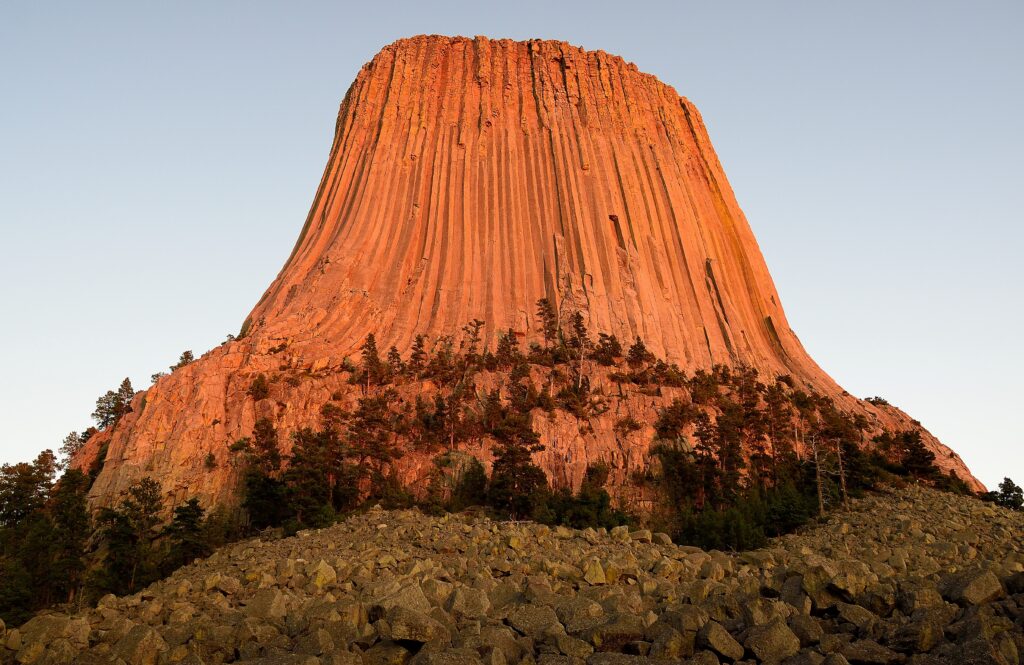Led by Indiana Attorney General Curtis Hill (R), Republican attorneys general from 15 states filed a friend of the court brief in the U.S. District Court for the Northern District of California asking the presiding judge, William Alsup, to dismiss a climate liability lawsuit against five oil companies brought by the cities of Oakland and San Francisco.
Oakland and San Francisco officials say oil companies sought to delay emissions regulations by discrediting climate change research. The city governments claim the companies should be held liable for harms allegedly caused by climate change and the costs to cities responding to the changing climate.
Joining Hill in seeking dismissal of the case are the attorneys general from Alabama, Arkansas, Colorado, Georgia, Kansas, Louisiana, Nebraska, Oklahoma, South Carolina, Texas, Utah, West Virginia, Wisconsin, and Wyoming.
The AGs cite numerous reasons why Alsup should dismiss the cities’ lawsuit.
The AGs argue whether or not to address climate change is a matter best left to the legislative branch of government, not the judiciary. “Plaintiffs’ objections to fossil fuel use are based in public policy, not law, and are thus not appropriate for judicial resolution,” the brief says.
The AGs also say the cities’ claims could “jeopardize our national system of cooperative federalism” by allowing certain cities or states to set energy policies to the whole nation. This echoes U.S. Environmental Protection Agency Administrator Scott Pruitt’s reasoning for reevaluating California’s Clean Air Act waiver which allows it to set emissions standards tighter than federal limits.
“Cooperative federalism doesn’t mean that one state can dictate standards for the rest of the country,” Pruitt said in an April 2 press statement EPA released upon announcing it was rescinding draconian Obama-era fuel economy standards and timetables.
The brief also argues allowing the cities’ lawsuit to go forward and be successful could open the cities themselves up to class-action lawsuits for billions of dollars in damages.
“[Cities are suing for] nothing more specific than promoting the use of fossil fuels,” the AGs write. “As utility owners, power plant operators, and generally significant users of fossil fuels (through facilities, vehicle fleets and highway construction, among other functions), States and their political subdivisions themselves may be future defendants in similar actions.”
The AGs also argue by demanding oil companies pay for sea walls and other climate mitigation and abatement programs, Oakland and San Francisco are attempting to regulate interstate commerce, a function assigned solely to Congress in the U.S. Constitution.
“Imposing such financial consequences on business activity contravenes Congress’s exclusive power to regulate interstate and foreign commerce,” the brief says.
In a separate case, in mid-April Boulder County, the City of Boulder, and San Miguel County in Colorado became the first municipal governments not on a coastline to file a climate-related lawsuit against oil companies. They are suing ExxonMobil and Canada-based Suncor Energy to force these companies to pay for what the plaintiffs call “their fair share of the costs associated with climate change impacts.”
The Colorado oil and gas industry issued a statement to the Boulder Daily Camera, calling the lawsuit a “political stunt” and saying the industry should not held liable for damages when it adheres to existing “already stringent state and federal laws.”
Colorado AG Cynthia Coffman is a party to the 15 state AGs’ brief opposing the Oakland and San Francisco lawsuit. In early April, Coffman also argued a case before the Colorado Supreme Court, defending the Colorado Oil and Gas Conservation Commission, the regulatory agency that oversees oil and gas development in the state, for not imposing climate-related health and safety restrictions on oil and gas leases in a case brought by environmental groups on behalf of six teenagers.
One hopes Coffman, alone or in concert with other AGs who realize oil and gas production and use is a valuable, highly regulated, legal activity critical to American energy security and economic prosperity, will challenge the Colorado lawsuit as well.
Since it is the cities filing the lawsuits and their residents, not primarily oil and gas companies, who actually burn the fossil fuels which they complain are causing harm, I propose the plaintiffs’ city governments stop using coal, gas, gasoline, and oil to power their emergency and police fleets and other government vehicles and to keep the lights, heat, refrigeration, and air conditioning on in their buildings. Although it is a radical proposal, it is in keeping with the threat they say fossil fuel use poses. Unless and until the cities suing oil companies stop using their products, the courts should dismiss the lawsuits.
These lawsuits, pushed by anti-fossil fuel, climate change fearmongers and opportunistic politicians looking for a new, deep-pocketed source of revenue in a time of tight state and local budgets, endanger the very existence of modern, industrial civilization. If the plaintiffs prevail, Americans will find their freedom to travel and live where they want curtailed by skyrocketing energy costs, and the reliability of their supply of electricity drastically reduced.
— H. Sterling Burnett
SOURCES: Climate Liability News; JNS Wire; WestWorld
IN THIS ISSUE …
Antarctic snowfall undermines climate fears … Nitrogen study gives climate hope … Antarctic temperatures colder than in the past … Media ignores cooling climate
ANTARCTIC SNOWFALL UNDERMINES CLIMATE FEARS
New research from scientists with the British Antarctic Survey shows snowfall in Antarctica has increased by 10 percent during the last 200 years. A new analysis of Antarctic ice cores shows the continent has accumulated an additional 272 gigatons of water since the early 1800s. This confirms earlier work showing although parts of West Antarctica have lost ice recently, most of the continent, including the Antarctic Peninsula, East Antarctica, and the vast interior is gaining ice. This research indicates climate models are wrong to assume Antarctica is on net contributing to rising seas.
In a press release announcing the findings, Elizabeth R. Thomas, lead author of the study, says understanding the ice mass balance in Antarctica is critical to an accurate appraisal of any contributions the continent might be making to ongoing sea level rise
“There is an urgent need to understand the contribution of Antarctic ice to sea-level rise,” said Thomas in the news release. Thomas added, “Our new results show … the annual average snowfall during the first decade of the 21st century is 10 percent higher than at the same period in the 19th century.”
SOURCES: UPI; Climate of the Past (behind paywall: http://www.bbc.com/news/science-environment-43691671)
NITROGEN STUDY GIVES CLIMATE HOPE
Overturning another aspect of so-called consensus science on climate change, a new paper in Science finds a significant previously unaccounted-for source of nitrogen, a necessary component of chlorophyll, which plants use to produce sugars for growth from water and carbon dioxide. Many climate scientists argue the amount of carbon dioxide plants can remove from the atmosphere is limited by the amount of nitrogen in the atmosphere. This paper shows there are vast amounts of nitrogen stored in the earth’s bedrock.
If the new study is correct, the world’s forests, crops, grasses, and other plants have access to and can use the massive amounts of nitrogen locked in the earth’s bedrock, which is broken down and released by weathering, microbes, and the action of roots and insects over time. As a result, terrestrial plants should be able to absorb more carbon dioxide than climate models assume, thus reducing any increases in global warming presumably driven by human carbon-dioxide emissions.
Ronald Amundson, a soil biogeochemist at the University of California at Berkeley, told Chemical and Engineering News, “If there is more nitrogen there than expected, then the constraints on plant growth in a high-[carbon dioxide] world may not be as great as we think.”
Investor’s Business Daily quotes ClimateDepot editor Marc Morano as saying, “This new nitrogen study is but one example of consensus science being overturned. The global warming science establishment should now be open to similar studies and dissenting voices on [carbon dioxide] to overturn the alleged climate change consensus.”
SOURCES: Investor’s Business Daily; Science (behind paywall)
ANTARCTIC TEMPERATURES COLDER THAN IN THE PAST
Reports from international research stations across Antarctica show much of continent has cooled in recent decades, becoming colder on average than when Roald Amundsen first reached the South Pole in 1911, long before human industrialization began adding large volumes of carbon dioxide to the atmosphere, which climate models indicate should be causing Antarctica, and the entire world, to warm.
Showa Station, a Japanese Meteorological Agency outpost in Antarctica, reports a slight cooling trend from 1985 until 2017. The Australian research outpost Davis Station has found no warming trend during the past six decades.
Data collected by the Royal Dutch Meteorological Institute from all 13 research stations spread across Antarctica show 10 of the stations demonstrate no warming trend, with some showing a slight temperature decline. Only three of the stations, all on the Antarctic Peninsula, show a slight warming trend.
Two studies from 2016—one from the British Antarctic Survey (BAS) and a second from scientists based in the United States—found natural factors account for temperature variability in Antarctica. Neither study found a human influence. The BAS study, published in Nature, concluded natural shifts in wind and ocean current circulations are the primary reason for changing, variable temperature in Antarctica. “Temperatures have decreased as a consequence of a greater frequency of cold, east-to-southeasterly winds, resulting from more cyclonic conditions in the Northern Weddell Sea associated with a strengthening mid-latitude jet,” the authors write.
Ohio University researchers Ryan Fogt and Megan Jones report Antarctica’s temperature was relatively high during the Amundsen and Scott expeditions of 1911 and 1912. Writing in an American Meteorological Society journal, they state, “Amundsen and his crew experienced temperatures that peaked above negative 16 degrees C[elsius] on the Polar Plateau on 6 December 1911, which is extremely warm for this region. … Scott also encountered unusually warm conditions at this time.” By contrast, the current average summer temperature for the South Pole’s Polar Plateau is -28.2 degrees Celsius.
SOURCES: DC Statesman; Climate Trends; Climate Dynamics (behind paywall); American Meteorological Society (behind paywall)
Writing in Real Clear Markets, Aaron Brown reports data from NASA’s Goddard Institute for Space Studies show from February 2016 to February 2018 global average temperatures dropped by 0.56 degrees Celsius, the largest two-year decline of the past century.
Brown says climate alarmists would be wrong to argue the recent steep drop in temperatures was evidence the climate is becoming more volatile because of anthropogenic climate change, because the monthly volatility of “global average temperatures since 2000 is only two-thirds what it was from 1880 to 1999.”
The recent cooling is no more proof anthropogenic climate change is not occurring than the previous two year record peak temperatures proved it was occurring. Brown calls both time periods “statistical noise compared to the long-term trend.” What Brown finds telling is
Biased reporting suggests warming is much steadier than it is.
[S]tatistical cooling outliers garner no media attention. The global average temperature numbers come out monthly. If they show a new hottest year on record, that’s a big story. If they show a big increase over the previous month, or the same month in the previous year, that’s a story. … When they show cooling of any sort—and there have been more cooling months than warming months since anthropogenic warming began—there’s no story.
SOURCE: Real Clear Markets
The Climate Change Weekly Newsletter has been moved to HeartlandDailyNews.com. Please check there for future updates!





